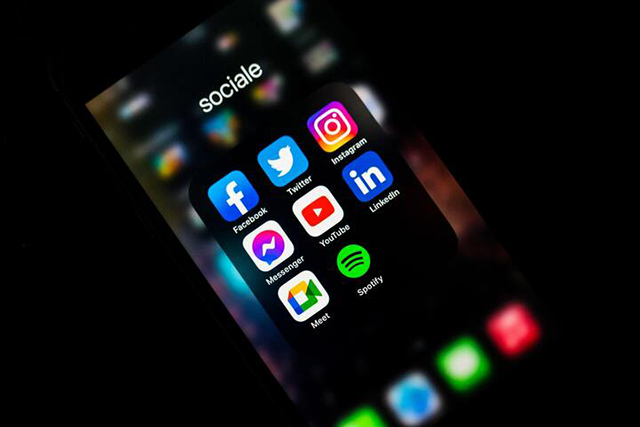 Membership TodaySign Up Now
Membership TodaySign Up NowVideo Transcript
Why is your campaign failing?
Justin Sardi: Today, I’m going to talk about the top three reasons that I see YouTube ads fail. Now, I do a lot of consulting, training, all of that good stuff, and weekly coaching calls with our members, and there are three specific reasons that I see YouTube ads not performing well. Honestly, most people always think, oh, it’s the targeting. The targeting is why. Help me dial in my targeting. When in reality, the targeting is the easiest part. There are three specific reasons that I usually see YouTube ads fail and that’s what we’re going to be talking about today.

Crappy creative
Justin Sardi, CEO, and co-founder of tubesift.com and videoadvault.com. And like I said, I’m going to be talking about the three reasons that I typically see YouTube ad campaigns failing. And the number one reason that I always see is a crappy creative or a CC, crappy creative. If you don’t have your creative dialed in, if your messaging on your ad is not correct, if you’re not using good hooks, your ad is going to fall flat on its face. And it doesn’t matter how great you are at targeting, or if you’re the best media buyer in the world, you’re not going to be able to get it to convert because your ad is literally the first impression and the hooks specifically.
What we usually like to do is script up a specific ad, figure out, okay, we’re going to run with these three or four hooks and I actually have another blog post that we’re shooting today all about our top five hooks that we use. Be sure to check that out. We’ll be rolling that out. I guess I’m going to have to roll that out before this one. But anyway, there are five specific hooks we use and I usually like to take two or three, usually three of those and bolt those onto the front of our ads. I’ll have a few different hooks and then my meat and potatoes and a call to action, and that usually gets us enough data in the beginning to know if the hooks we’re having that we’re using are working, but not having a good ad creative is the number one problem, which is why we created Video Ad Vault.
I spent a lot of time bookmarking ads, going through high performing ads, checking out other marketers swipe files, trading swipe files, all that good stuff. And then when Video Ad Vault, when we finished that up, I’m now able to literally just search for any keyword, find all the ads that are working, look at what’s going on and quickly and easily analyze different hooks, angles, calls to action, and even landing page copy that is going to work in my niche or in any niche. Definitely give that a look. But number one reason, like I said, a crappy creative.

Using the same ad for all platforms
The number two thing that I see people doing that doesn’t usually work, there are very rare cases where this works, but somebody will take their exact Facebook ad, upload it to YouTube and be like, this is going to work. It worked on Facebook. When in reality, the two platforms are completely different. With YouTube, we’re talking intent traffic. A lot of times people are going to YouTube trying to figure out how do I run YouTube ads, for example. And if I can put my ad in front of them when they’re actively searching for how to run YouTube ads, they intend on learning that at that moment in time.
Whereas Facebook, they might have liked the Tube Sift page or something and we’re running ads to them where maybe they did like it. I mean, who goes back in Facebook and unlikes pages and things like that? So YouTube and Google is intent traffic most of the time when you’re targeting by placements, keywords, even in market audiences, which are basically people who are actively shopping for products or services. You need to treat those ads differently.
In the very beginning of the YouTube ad, you really want to hook the viewer. Like I said, we have a whole nother post on the top hooks that we use, but you need to hook that viewer in a way that tells them, hey, I know what you’re going through. Here’s your pain points. Here’s what your aspirations are, things like that, and really get them hooked in the beginning, and then explain a little bit more. YouTube ads and Facebook ads, also the call to action is a bit different. You might say, hey, click the link in the bottom left of this video or something along those lines that wouldn’t make sense on Facebook.
Thinking your ads going to work on Facebook, moving it over to YouTube without properly adjusting it, not the best idea. Not to mention Facebook ads are a different format. I’ve seen so many people upload the wrong size to YouTube and be like, why is it not working? I’m like, well, it looks like crap. There’s two black bars on the sides. It doesn’t fit with YouTube. It doesn’t feel organic on here. It screams ad. That’s a lot of the reason that you can’t just take an ad from Facebook and slap it on YouTube as well, and that’s the second reason that I see.

Not knowing your key performance indicators
Now, the third reason that I see YouTube ad campaigns fail is not knowing your KPIs. A lot of times people will throw up an ad. They’ll be like, oh, I spent $100 and it didn’t work. I’m like, cool. Well, what was your click-through rate? They have no idea. All right. Well, what was your landing page converting ad? I don’t know. We just spent money. It didn’t make money back. I’m like, okay, well we have a bunch of KPIs and there’s actually another blog post we have on that. I’ll link to that below. But there’s a set of KPIs we look for. Usually what we’ll do is we’ll start at the very beginning and we’ll see view rate. View rate is essentially your number of views based on your number of impressions because on YouTube, people can skip your ads. If a ton of people are skipping, either your audience is off or your targeting is off, or your hook is off. You can kind of break down that step of the process and work on fixing that first.
Then we’ve got our click-through rate. If at least 1% of the people aren’t clicking through, then you have an ad creative problem. I usually try and get somewhere around, like the 3%, that’s how I know, hey, this is good. This is going to be a winner, but anything below 1%, you need to go back to the drawing board and fix that.
Then we have number of clicks to the landing page versus conversions. You got to check out conversion right there, and every other step of the funnel that you have. You have to know your KPIs, your key performance indicators in order to know what part needs adjusting because oftentimes when I’m doing consulting calls or whatever, I will run through all of those things and be like, oh, this is exactly what you need to fix. Your ad is good. Your landing page might not be conveying the same message that your ad is. So let’s adjust that to make it fit what your whole marketing message is, and it should be congruent throughout the entire funnel for the best results.
Use the best software for winning ads
Those are the top three reasons that I see YouTube ads technically fail from time to time. Like I said, we do have Video Ad Vault, which is going to help you knock all of your ad creatives out of the park. You’ll be able to see exactly what’s working in your niche or in any niche that you can apply to your niche right off of the bat. Definitely check that out with a link below this video, and that’s it for me on this one. Bye for now.
 Membership TodaySign Up Now
Membership TodaySign Up Now


Comments are closed.